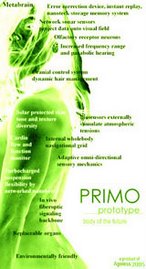This is not always feasible), when considering that some countries (especially in Africa) are without sophisticated Information Communication Technologies (ICTs) and are bandwidth poor. Under these unfavourable conditions, it is often difficult for a journalist to effectively fulfil this responsibility. How can we as digital journalists overcome the ICT divide and increase accessibility in marginalised communities?
One of the main objectives of media organisations such as the Highway Africa News Agency is to address the issue of accessibility in the continent. However, even that audience with access to communication technologies, accessibility to the information itself is still a problem.
Consider webpages for instance; many digital journalists are not familiar with HTML coding and the crucial role it plays in structuring website content in such a way as to render it easily accessible to its users.
“Content developers should make content understandable and navigable. This includes not only making the language clear and simple, but also providing understandable mechanisms for navigating within and between pages. Providing navigation tools and orientation information in pages will maximize accessibility and usability.”[1]
Digital journlists need to know how to do this in order to be able to efficiently structure their media packages in ways that make them accesible to their online audiences. We also need to consider the often marginalised disabled communities.
“Through better authoring, Web information providers can avoid shutting out the world's disabled population from the information age, and can garner a good portion of this largely ignored market.”[2]
ICTs such as braille displays and screen readers render your website content accessible also to the blind population.
Here are a few guidelines on accesibility as outlined by W3C1:[1]
- Mark up documents with the proper structural elements. Control presentation with style sheets rather than with presentation elements and attributes.
- Ensure that tables have necessary markup to be transformed by accessible browsers and other user agents.
- Provide clear and consistent navigation mechanisms -- orientation information, navigation bars, a site map, etc. -- to increase the likelihood that a person will find what they are looking for at a site.
- Ensure that documents are clear and simple so they may be more easily understood.
References:
http://www.w3.org/TR/WAI-WEBCONTENT/
http://htmlhelp.com/design/accessibility/why.html

No comments:
Post a Comment